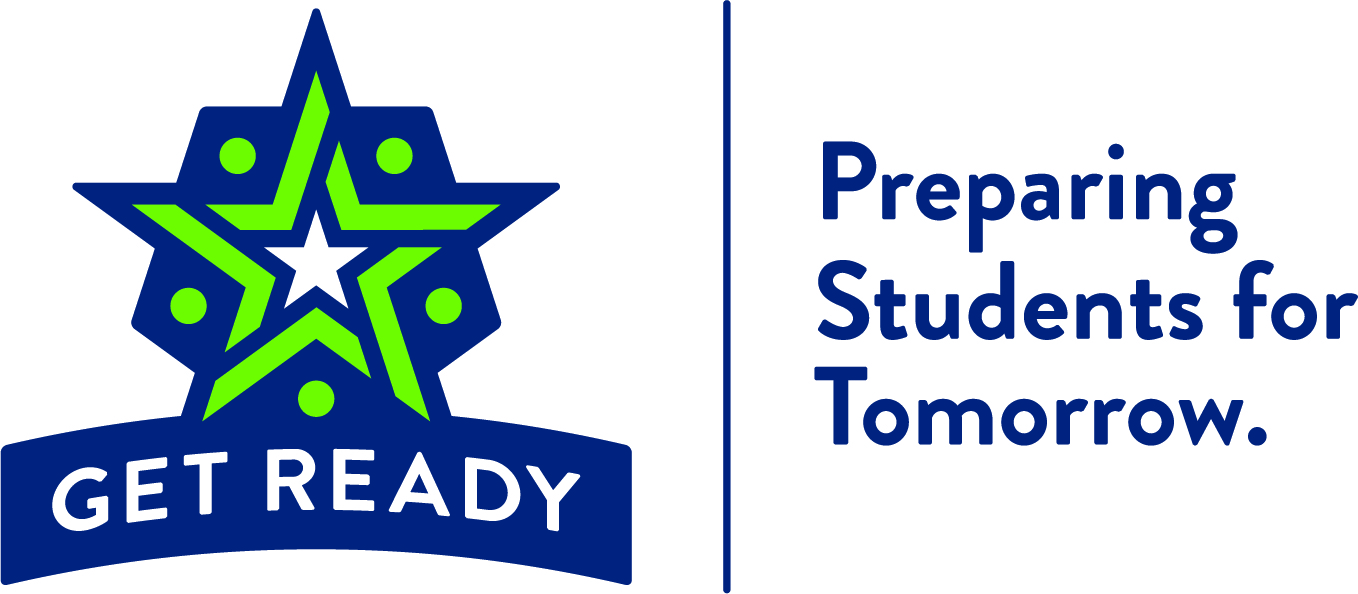The Get Ready Postsecondary Pathways Curriculum is a comprehensive, grade-level-based program that guides students from 6th to 10th grade in exploring personal motivations, career interests, and postsecondary pathways.
Beginning in 6th grade, students define their drives and interests, explore career categories, and learn about pathways like college and apprenticeships. By 7th and 8th grade, they refine their drives, develop time management skills, build support networks, and explore career clusters and high school planning. In 9th grade, students focus on transitioning to high school, aligning their learning styles with career goals, and exploring postsecondary options. By 10th grade, the curriculum emphasizes career preparation through goal setting, skill development, resume building, and financial literacy, helping students make informed decisions about their educational and career paths.
Note: There is no cost for partners to access the curriculum. Get Ready GEAR UP does require partners to sign a Joint Power Agreement to utilize the curriculum.
The Pathway Essentials curriculum is a condensed version of the 6-10th grade curriculum that incorporates key lessons from each grade level. The Career Pathways Curriculum series is often used by youth serving organizations, Special Education transition programs, Alternative Learning Centers and other programs looking for a curriculum not limited to a particular grade level of students. Students start by building an understanding of who they are, what their support network looks like, and what their drives are. They then complete a career interest survey and dive deeper into one selected career through a poster project. In the final module students explore reasons for pursuing postsecondary education, the different postsecondary pathways, how to pay for college, what dual credit options exist at their high school, and bring it all together with a final poster on their postsecondary pathway of choice.

The 6th-grade curriculum is designed to help students explore their personal motivations, career interests, and postsecondary pathways. It begins with students defining "drive," identifying their own interests and passions, and discovering new ones through reflection and inventories. Students are introduced to various career categories, differentiating between jobs and careers, and aligning their interests with potential career paths. They then complete a career interest survey and dive deeper into one selected career through a poster project and presentation. As the curriculum progresses, students explore postsecondary education options, learning about pathways like college, apprenticeships, and military service, while also breaking down myths about college costs. The curriculum culminates with students developing a visual plan that connects their identity, skills, and interests to their chosen career and education pathway.

The 7th-grade curriculum focuses on helping students explore their personal drives, career interests, and postsecondary pathways. It begins by encouraging students to reflect on what motivates them and how these drives may evolve over time. Lessons emphasize the importance of building a support network to help achieve personal and academic goals. Students explore career interests through surveys and web activities, linking their strengths and interests to possible career clusters. They also practice professional skills, such as conducting informational interviews. As the curriculum progresses, students delve deeper into postsecondary education options, considering how to align career pathways with their drives and interests, and they conclude by showcasing their personalized best-fit pathway.

The 8th-grade curriculum emphasizes personal drive, career exploration, and preparation for high school and beyond. It begins with students reflecting on their personal motivations and identifying skills they can further develop to align with their drives. They explore pathways to success by learning from role models and understanding the steps needed to achieve their goals. Lessons focus on time management, crafting a high school plan that supports future aspirations, and selecting the best-fit high school and dual credit options. Students also delve into GPA calculation, career interests, and connecting postsecondary pathways to career goals. The curriculum culminates in the creation of an academic portfolio that outlines their high school plan and sets a foundation for their future pathway.

The 9th-grade curriculum provides a comprehensive approach to help students transition into high school and explore future career pathways. It begins by addressing the major changes students face—procedural, social, and academic—and encourages them to develop personalized success plans. Students learn to align their learning styles with school activities, manage time and grades, and build strong support networks. The curriculum also emphasizes career exploration through lessons on learning styles, the difference between jobs and careers, career clusters, work personality types, and postsecondary pathways. Students engage in self-reflection and assessments to explore interests, ultimately shaping a personal vision for their future career and educational journey.

The 10th-grade curriculum focuses on preparing students for postsecondary pathways through goal setting, skill development, and career exploration. Students begin by learning to set S.M.A.R.T goals and develop both hard and soft skills to support their academic and career aspirations. Lessons on building resumes and interview skills equip students with essential employability tools. They explore various postsecondary options, including four-year colleges, community colleges, technical colleges, apprenticeships, military service, and direct entry into careers, considering the benefits and challenges of each. Financial literacy is introduced, with a focus on understanding financial aid, the FAFSA, and other resources to fund education. The curriculum emphasizes personal reflection, helping students identify the best postsecondary path that aligns with their skills, interests, and career goals.

